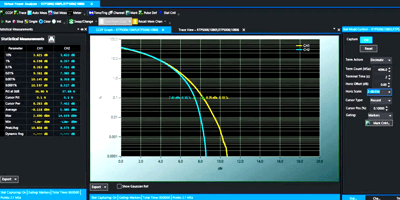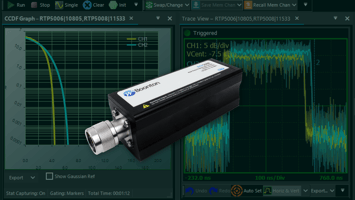Wi-Fi has gone through several generations over time, offering various improvements to support a...
Video Bandwidth and Rise Time – What Do These Terms Mean for Power Sensors?
Peak power sensors have a small smoothing capacitance and low-impedance load across the smoothing capacitors to discharge rapidly when the RF amplitude drops, which results in wide video bandwidths and fast rise time specifications. The RTP5000 Series, for example, achieves a rise time of less than 3 nanoseconds and 195 MHz of video bandwidth.
Review key information related to the video bandwidth and rise time of a power sensor in our "RF & Microwave FAQ: Video Bandwidth and Rise Time" playlist.
RF and microwave frequently asked questions featured in the playlist include:
What is rise time?
Rise time is the time interval for a signal’s leading edge to change or rise from a certain low value (e.g., 10% of the pulse magnitude) to a certain high value (e.g., 90% of the pulse magnitude).
What is the video bandwidth of a power sensor?
Video bandwidth describes the frequency range that a sensor can track a signal’s fluctuations in envelope power.
How does limited video bandwidth affect power measurements?
A sensor with limited video bandwidth will not always be able to track envelope power fluctuations. With a response speed that is too slow, various measurement errors will occur since there will be points in time when the carrier power is unknown. For example, a sensor with insufficient video bandwidth can affect envelope power, peak envelope power, and average power measurements.
How do you calculate rise time and video bandwidth?
The formula for a calculating a sensor’s rise time and video bandwidth can be defined by:
Rise Time (ns) = 0.35 / Video Bandwidth (GHz) or Video Bandwidth (GHz) = 0.35 / Rise Time (ns)
For example, a sensor with 195 MHz VBW would be able to track a signal with a rise time of about 2 ns (Rise Time = 0.35 / 0.195 GHz ≈ 1.79 ns). When specified, the sensor’s performance would be more conservatively defined as having a rise time of less than 3 ns. Using the same example, a sensor with a rise time of about 2 ns (but specified as less than 3 ns) equates to a video bandwidth of 195 MHz (Video Bandwidth = 0.35 / 1.79 ns ≈ 0.195 GHz).



